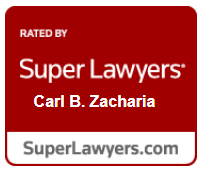Asset Protection Trusts
An irrevocable grantor trust aka an Asset Protection Trust (“APT”) can be a useful tool for Medicaid planning and asset protection. In such a trust, the grantor (the person establishing the trust) irrevocably transfers assets into the trust, removing them from their estate for Medicaid eligibility purposes. Here's how it works:
- Asset Protection: Once assets are transferred into the trust, they are no longer considered the property of the grantor. This means they are protected from creditors and may not be counted for Medicaid eligibility purposes after the five-year lookback period.
- Medicaid Planning: By transferring assets into an irrevocable trust more than five years before needing Medicaid benefits, those assets are not subject to the Medicaid lookback period.
- Grantor Trust Status: The grantor can retain certain powers over the trust, such as the ability to receive income from the trust. The grantor also retains the right to change the remainder beneficiaries of the trust, as well as remove and replace the trustee. This grants the trust “grantor trust" status for tax purposes, meaning the grantor is still responsible for paying taxes on income generated by the trust.
- Irrevocability Requirement: The key is that the trust must be truly irrevocable to be effective for Medicaid planning and asset protection. This means the grantor cannot change the terms of the trust or access the assets once they are transferred.
- Appreciated Assets: If a parent has highly appreciated assets and transfers them to children, the transfer is subject to carryover basis and will result in the children paying significant capital gains tax in the future. If the highly appreciated assets are transferred to an APT, since the trust is a grantor trust and the assets will be included in the estate of the parent on death, the children will receive a “step up" in basis and they will be able to avoid paying significant capital gains taxes.
- Step Up in Cost Basis: Because the assets are included in the estate of the grantor, the estate gets a step up in tax basis as to trust assets to the fair market value of the assets as of the grantor’s death. In many cases, this is a significant advantage over outright transfers to children.
- Risk Avoidance: Often, Parents choose to transfer assets to their children; however, certain risks must be anticipated that do not need to be considered when using this type of trust (a) Claims of Creditors: The claims of the creditors of the adult children could be satisfied through the assets of the parent, if the parent makes outright transfers to the children; (b) Matrimonial Action If a child to whom assets are transferred is subsequently divorced, the transferred assets may become subject to a claim of equitable distribution. While Hornbook law dictates that assets transferred from a parent to a child are not subject to equitable distribution, practitioners in the field of family law indicate that judges often find ways to give additional assets, other than the transferred assets, to the other spouse. In addition, the assets transferred could affect alimony or support rights or obligations; (c) Bad Habits: if a parent transfers assets to a child who is a gambler, a drug addict, an alcoholic or a spendthrift, the assets may be squandered and no longer available to the parent.
Setting up an APT for Medicaid planning and asset protection can be a fantastic way to protect assets from nursing home exposure; however, the rules are complex and require careful consideration. Consulting with an attorney at Zacharia Brown will allow you to understand if an APT is right for you.




